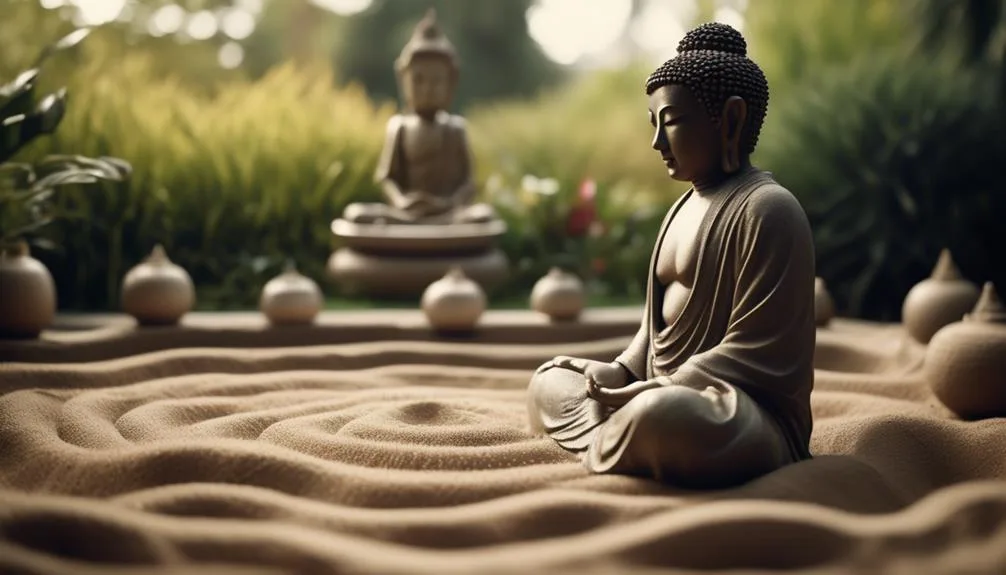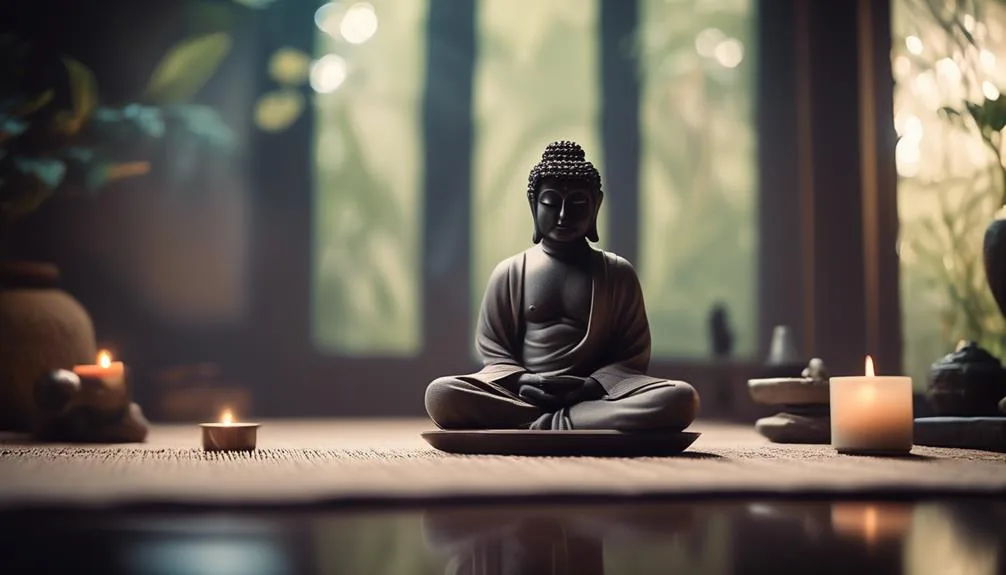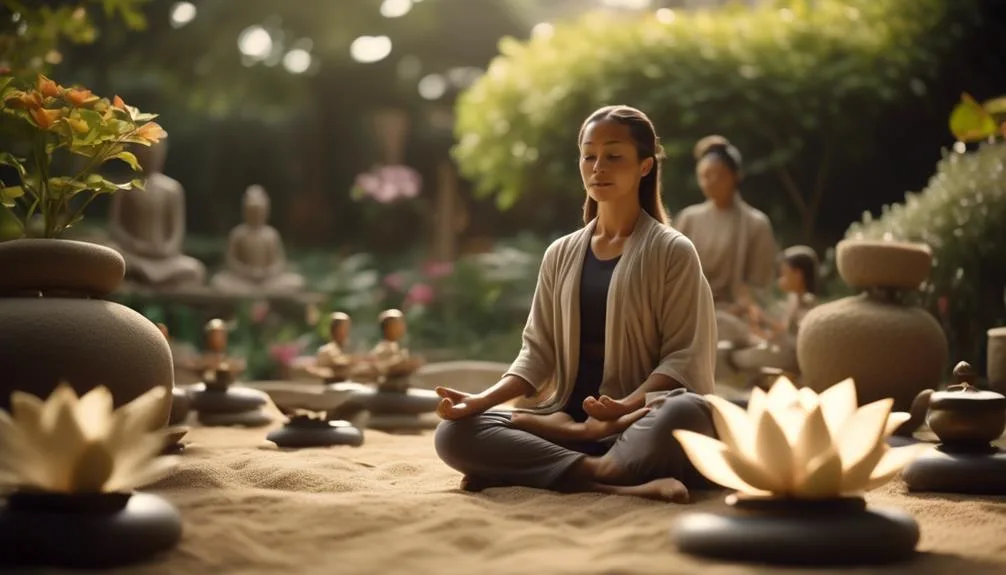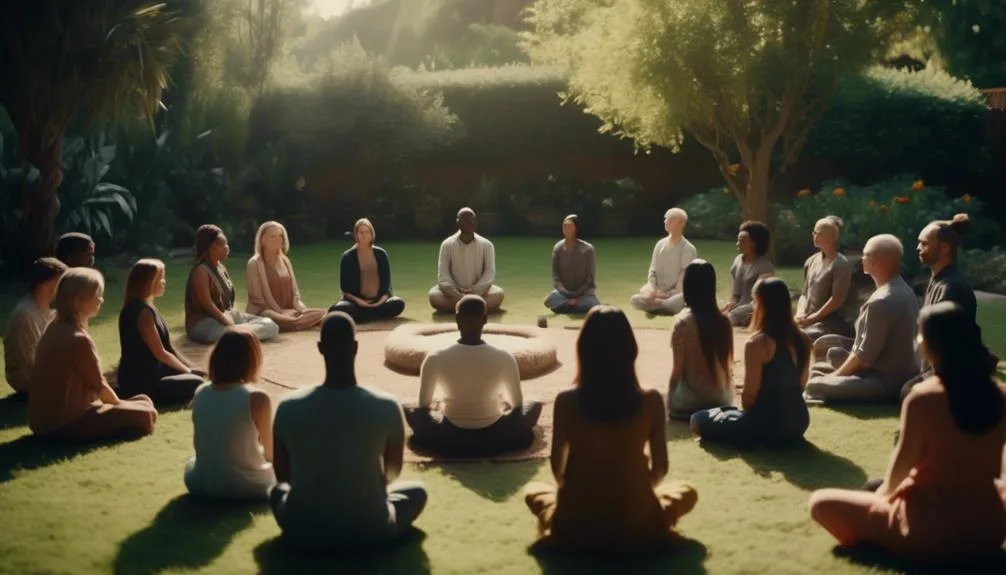How to Teach Meditation
Teaching meditation is no walk in the park. You're about to embark on a journey that requires patience, understanding, and a deep knowledge of the practice itself.
It's not just about sitting still and quieting the mind; it's about teaching others how to navigate their inner world, how to recognize and let go of distractions, and ultimately, how to find peace amidst chaos.
However, before you can teach others, you must first master the art yourself. How do you do that, you ask?
Key Takeaways
- Regular meditation practice reduces stress and improves concentration.
- Embrace holistic approaches that encompass mind, body, and spirit when teaching meditation.
- Overcome distractions by acknowledging and letting go of them.
- Build a supportive meditation community for students.
Understanding the Basics of Meditation

Before diving into the art of teaching meditation, it's crucial that you grasp the fundamental principles and techniques of meditation itself. Let's clarify a few meditation misconceptions first.
Meditation isn't about forcing your mind to be quiet; rather, it's about finding silence already existing in the depths of your mind.
Understanding the benefits of meditation can be a powerful motivator. Regular practice can reduce stress, improve concentration, and promote a general sense of well-being. It's not about escaping reality, but confronting it with clarity and calmness.
Developing Your Own Meditation Practice

To truly master the art of teaching meditation, it's essential you develop your own regular meditation practice, digging deeper into the quiet corners of your own mind. This journey of self-discovery is the key to understanding the holistic benefits of meditation.
Create personalized mantras that resonate with your core. These will serve as an anchor in your practice, helping you dive into tranquility. Remember, meditation isn't just about quieting the mind, it's a journey of self-discovery, leading to a profound sense of freedom.
Meditation is a personal journey. As you grow in your practice, you'll better equip yourself to guide others on their path. Embrace this experience wholeheartedly as it's pivotal to your success as a meditation teacher.
Teaching Techniques for Meditation

Understanding various teaching techniques for meditation won't only enhance your personal practice, but it'll also empower you to guide others through their transformative journeys. Consider using meditation technology like apps or guided online sessions. They're excellent tools that offer accessible, customizable methods to aid in meditation instruction.
Simultaneously, embrace holistic approaches that encompass mind, body, and spirit. This can involve integrating mindfulness, yoga, or dietary advice. Remember, every person's path to tranquility is unique, so flexibility in your teaching approach is crucial.
Keep exploring, experimenting, and refining your techniques. You're not just teaching meditation – you're facilitating personal growth and freedom. Your dedication to mastering these techniques can light the way for others on their journey towards inner peace.
Managing Common Challenges in Meditation

While mastering different teaching techniques is key, it's equally important to be prepared for the inevitable challenges your students might encounter in their meditation practice.
One common issue is overcoming distractions. Another is handling restlessness.
Here are some tips to guide your students through these challenges:
- Encourage them to acknowledge distractions, not fight them. Letting go is a part of the journey.
- Teach them to focus on their breath. It's a simple yet powerful tool.
- Advise them to change their meditation position if they're feeling restless.
- Suggest they try shorter sessions. Sometimes, less is more.
- Remind them that it's okay to have off days. Consistency, not perfection, matters.
Cultivating a Supportive Meditation Community

Building a supportive meditation community can significantly enhance your students' meditation experience. It provides them with a strong network of like-minded individuals who encourage and inspire each other on their journey.
This community building isn't just about creating a group; it's about fostering an environment that nurtures growth, understanding, and freedom. Your leadership skills play a vital role here. You'll need to model the mindfulness, empathy, and patience you wish to see in your community.
Encourage open communication and shared experiences. Organize group meditations and discussions, fostering a sense of shared journey and mutual support.
Frequently Asked Questions
What Are the Health Benefits Associated With Regular Meditation?
Meditation helps you combat anxiety, offering a sense of calm and peace. It also boosts your productivity by enhancing focus and clarity. You'll experience a significant improvement in overall health with regular practice.
How Can Meditation Affect One's Sleep Quality and Patterns?
Meditation can be your night-time lullaby. It improves your sleep hygiene, setting a rhythm for peaceful slumbers. You'll notice a boost in dream recall, enhancing self-awareness. Embrace the tranquility, it's your key to freedom.
Can Meditation Be Incorporated Into a Physical Fitness Routine?
Absolutely, you can incorporate meditation into your fitness routine. It enhances athletic performance by improving focus and reducing stress. Consider adding it to your yoga practice for a balanced mind-body workout.
Is There Any Scientific Research Supporting the Effectiveness of Meditation?
Yes, there's plenty of scientific research backing meditation's effectiveness. Studies in meditation neuroscience show it enhances brain function. It also boosts productivity by improving focus and reducing stress. It's a powerful tool for personal growth.
Are There Any Specific Diet Recommendations for Individuals Practicing Meditation?
While meditating, you're not bound to a strict diet. However, foods known as 'meditation friendly foods' can enhance your experience. They're often part of 'detoxifying diets'—think fresh fruits, vegetables, and plenty of water.
Conclusion
In sum, teaching meditation isn't just about mastering techniques. It's about understanding the essence of mindfulness, cultivating your own practice, and fostering an environment that supports growth.
It's a journey filled with challenges, but also profound rewards. Remember, the best teachers aren't those who've reached perfection, but those who continue to explore, learn, and share the beauty of the journey.
Keep nurturing your practice, your students, and the community. The rest will naturally follow.






